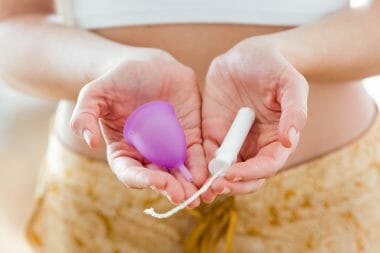More and more couples today, turn to easy methods of calculating the woman’s fertile days either to abstain from intercourse to prevent a pregnancy or to ensure intercourse on those days to increase chances of pregnancy.
Often many couples and families feel financially or mentally unprepared to welcome a new addition into their lives. To prolong having kids, it is best to understand the woman’s fertile days and abstain from intercourse during those days. Birth control can be achieved without using any contraceptive devices.
On the other hand, if a woman is trying to conceive, she must closely monitor her menstrual cycle, determine her most fertile days and ensure intercourse during this phase to maximize her chances of getting pregnant.
The Ovulation Time Span
Today, there are many reliable methods to calculate the fertile and infertile days of a woman’s menstrual cycle. Each of these methods determines the exact date of ovulation — that is when an egg is released from the woman’s ovaries, each month. The day of ovulation is calculated by observing the woman’s menstrual cycle or by observing specific physical signs like changes in the vaginal mucus or rise in body temperature.
The fertile phase of a healthy woman occurs approximately around the middle of every menstrual cycle — beginning about 72 hours prior to ovulation and lasting up to 24 hours after ovulation. In spite of this short span, medical professionals advise abstaining from intercourse for around 7 — 10 days during the fertile period to eliminate all possibilities of getting pregnant.
Popular Methods to Determine Fertile Days
There are two traditional methods to determine the fertile days — the calendar method and temperature method. Depending on the type of technique used, these methods have a success rate ranging from 80 percent to 99 percent.
In the calendar method, a woman must observe her menstrual cycles for extended periods of time like a year or more and maintain accurate records of the observations. With the help of these records, a medical professional will be able to determine the probable date of ovulation and accurately pinpoint the fertile and infertile days. Generally, the calculation is made as follows:
- Find out the shortest menstrual cycle. Subtract 18 days from the number of days in this cycle.
- Now subtract 10 days from the longest menstrual cycle.
- The results of both these calculations indicate the first and last days of the cycle during which the woman can become pregnant.
To determine ovulation date using the temperature method, the woman’s temperature has to be recorded every morning just after waking up. The temperature reading is best taken at the same time everyday with a basal thermometer. It is also important to record temperatures at the same spot — in the armpits or the mouth.
A slight increase in temperature generally indicates ovulation. Once this temperature change has been noted, those couples on family planning must abstain from intercourse at least for two days. It is safe to resume intercourse four days after this rise in temperature. Only after the menstrual period begins does this temperature return to normal.
You can use the Ovulation Calculator from HealthStatus to calculate your ovulation date.






Reply